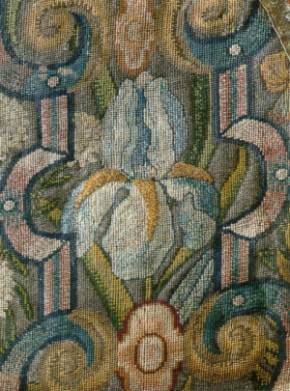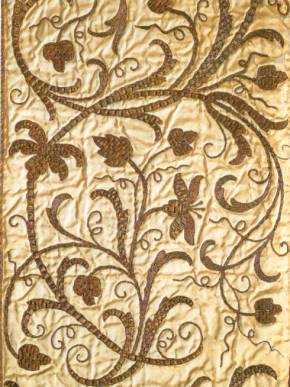With great joy, triumph and
splendour, the wedding of Duke William V. of Bavaria to
Princess Renata of Lorraine was celebrated at the Munich
court in 1568. A contemporary chronicle recorded the
festivities; its detailed descriptions and illustrations
clearly reveal the important part that textiles played in
the decoration of court galleries and tournament
tiltyards and, of course, in the sumptuous clothes worn
by the princely couple and their guests.
A silk velvet cloak, lavishly decorated with gold and
silver embroidery that the duke sported for the occasion,
belongs to the treasured possessions of the Bayerisches
Nationalmuseum. But there are many more: Tapestries woven
in gold and coloured silks that adorned state apartments
and galleries at the Wittelsbach court, oriental carpets
collected by the dukes, elegant doublets made of Italian
silk and

from altar frontal, south germany, 1612-17,
Inv. Nr. T 1685
